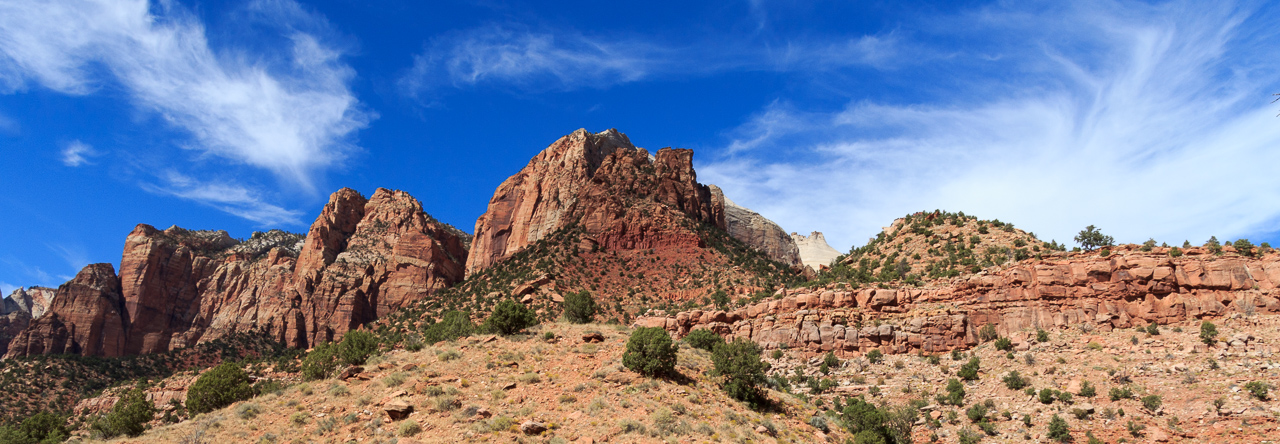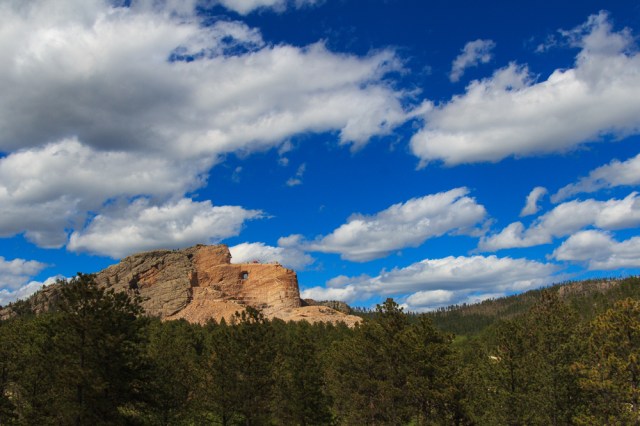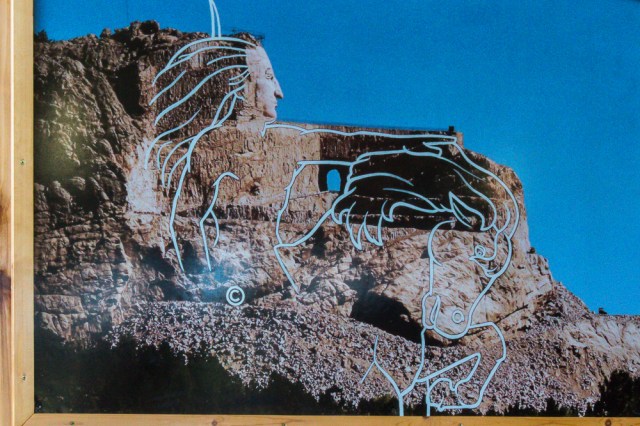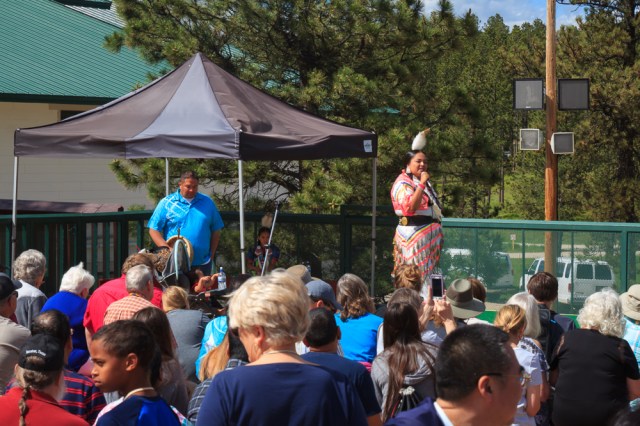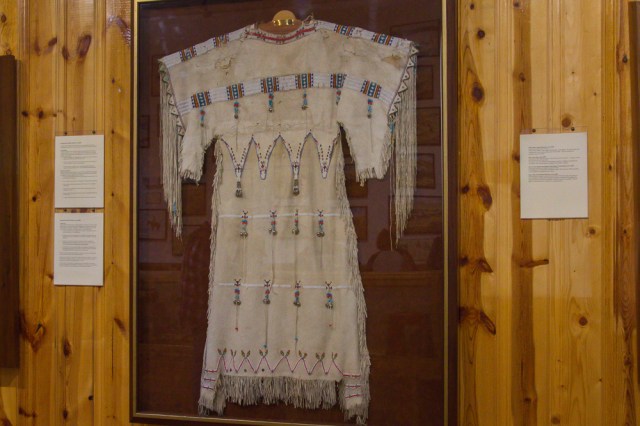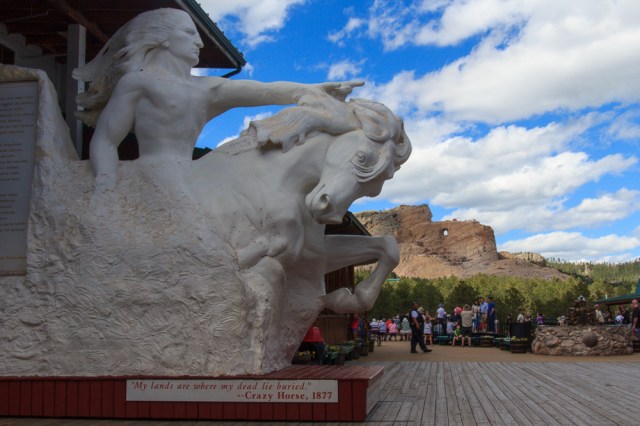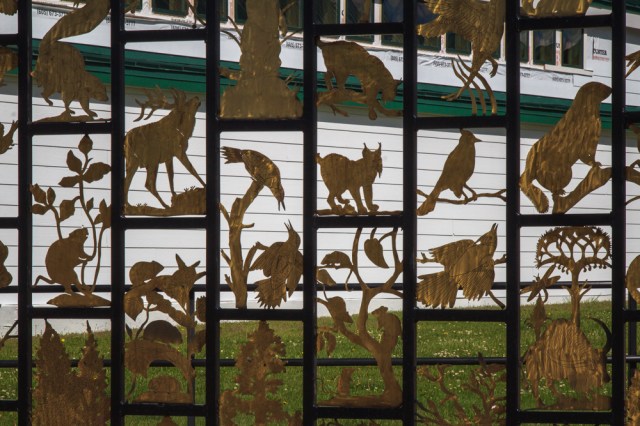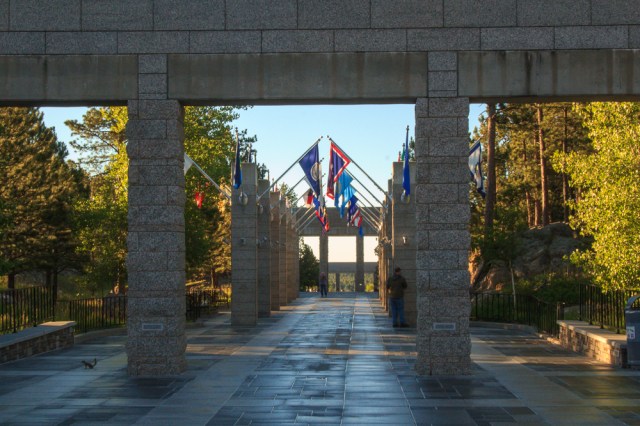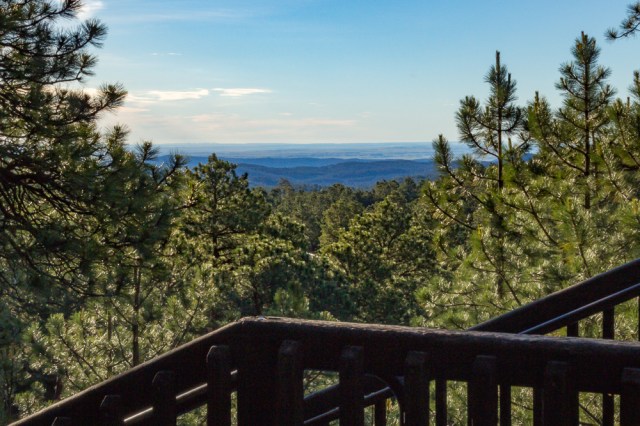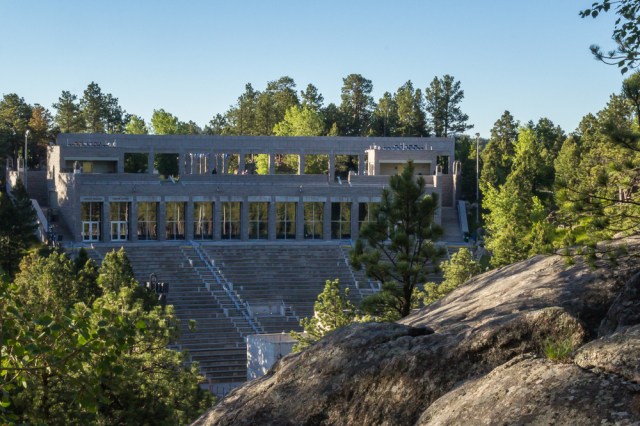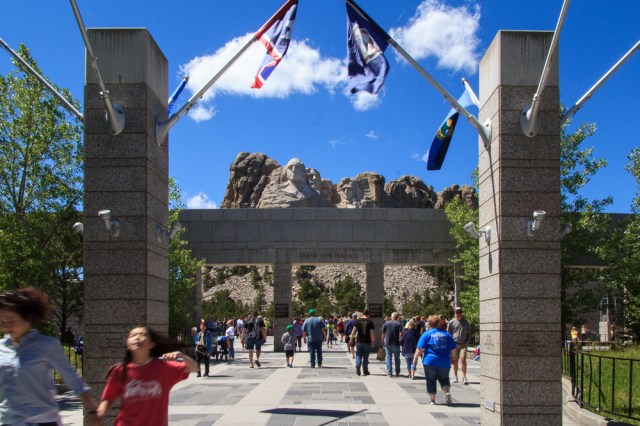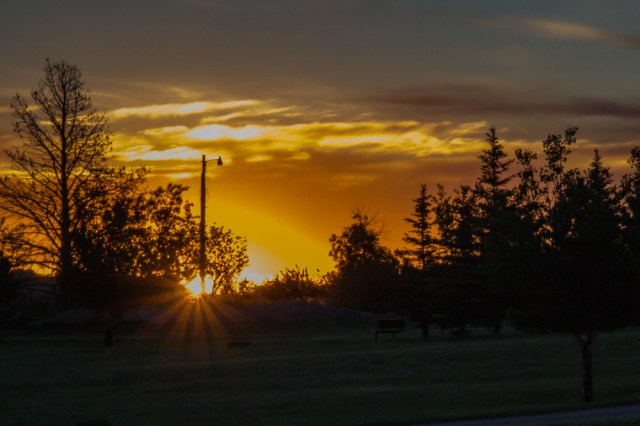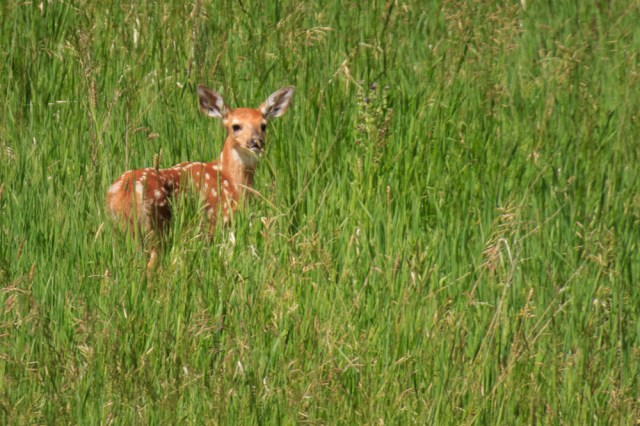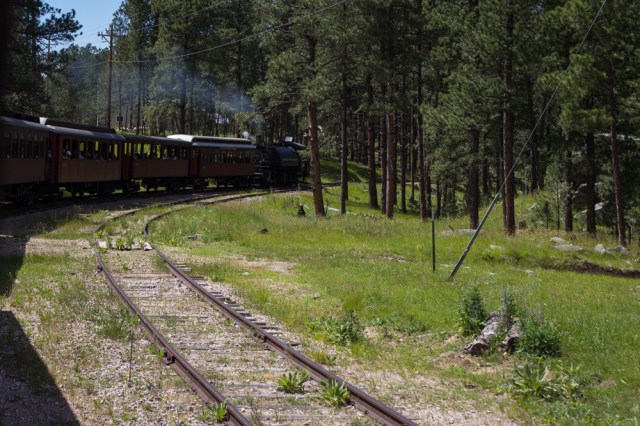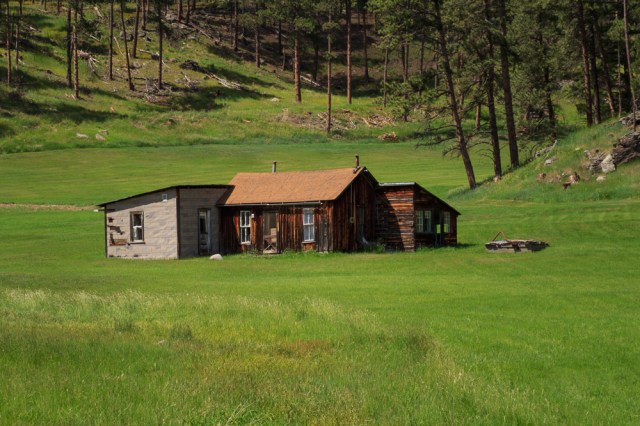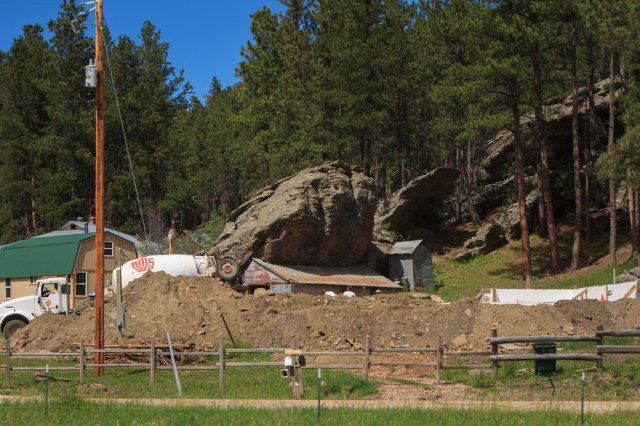Iron Mountain Road & Needles Highway
A trip to the Black Hills is not complete unless visitors drive the Iron Mountain Road and Needles Highway. Designed for motorists to slow down and enjoy the view of the hills and the fresh pine scent of the forest, the 17-mile Iron Mountain Road, constructed in 1933, contains 314 curves, 14 switchbacks, 3 pigtails, 3 tunnels, and 2 splits. The slow pace kept my motion sickness at bay as the road corkscrewed in a 360-degree fashion through the pigtails and the 180-degree switchbacks.
Below is one of the pigtails. Note the asphalt below the bridge and how the road continues through the tunnel.

The tunnels were so tight I thought for sure we’d scrape the truck on the granite walls.

Stopping at the turnouts to catch a glimpse of the presidents or peer out at the expanse of forest is a requirement.

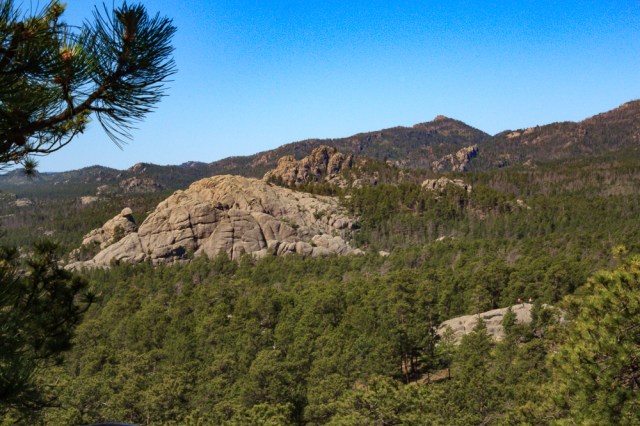
At one stop, we saw the driver of this motorhome considering whether to stuff his rig through the tunnel.

The motorcyclists made encouraging comments, but the RV started a slow backup process around the curves he had just navigated.
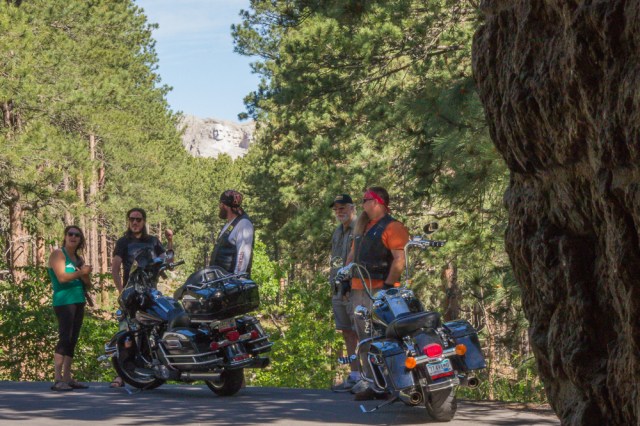
One of the motorcyclists said the motorhome found a place to turn around a few yards down the road. I guess the driver of the RV ignored the cannot-miss signs that warned against oversized vehicles, or maybe he didn’t realize how big his unit really was.
Needles Highway came next, another beautiful drive through the green forest, granite spires, and one-way tunnels, on a curvy narrow road.

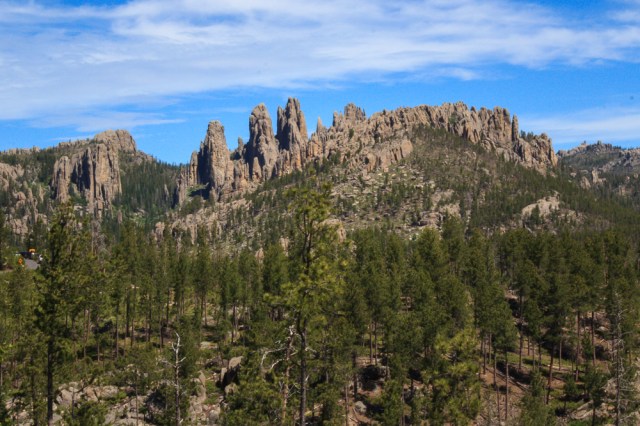

The Needles Eye is a popular place for taking photos. There are a few parking spots, but they fill up fast during busy times.
After winding our way through the scenic roads, Sylvan Lake surprised us at the end. Ah, a perfect place to stretch our legs.

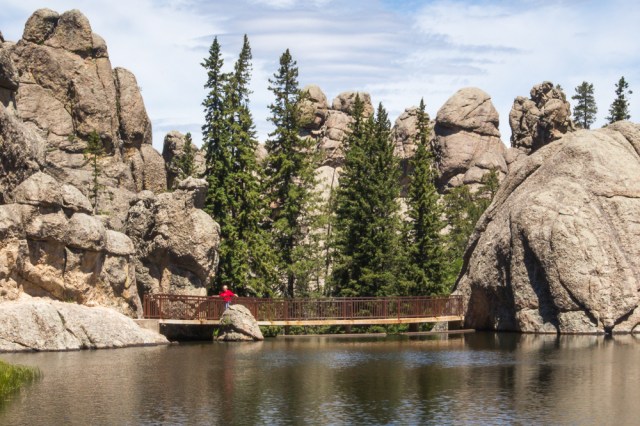
The lake was created by Theodore Reder when he built a dam across Sunday Gulch in 1881 and it became part of Custer State Park in 1921. It wasn’t a large lake, but very popular for fishing, swimming, paddleboards, and kayaks. Sylvan Lake Campground offers sites nearby for hike-in, tents, and small RVs and trailers between 25’ and 27’ in length. Interested in something more elegant, try Sylvan Lake Lodge where a couple can also host a wedding.
Custer State Park – Wildlife Loop
The best viewing for animals on Wildlife Loop in Custer State Park is around sunrise or sunset. We opted for another early morning to catch the animals before they hunkered down for the heat of the day. Six o’clock A.M. was slow going when watching the road for signs of deer that might bound out in front of the truck.

Prairie dogs poked their heads out of their burrow or stood on their hind legs as if scouting the horizon for predators. I wondered if there was a hierarchy involved in determining which rodent lived in which neighborhood. And what about their governance structure? Who is in charge? Off to Wikipedia to learn more. I won’t go into the details. If you are interested, click here.
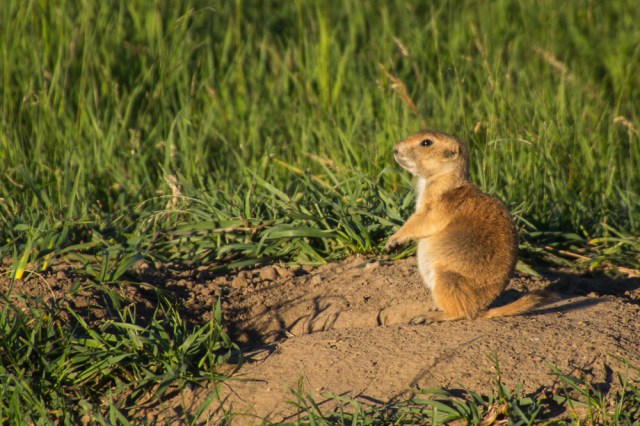
At one point, wild burros walked toward us on the road. In their group was one with a white coat. I don’t think I have ever seen a white burro before. Have you?
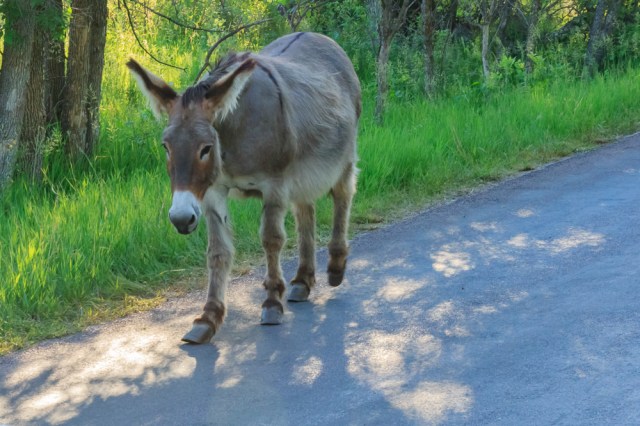
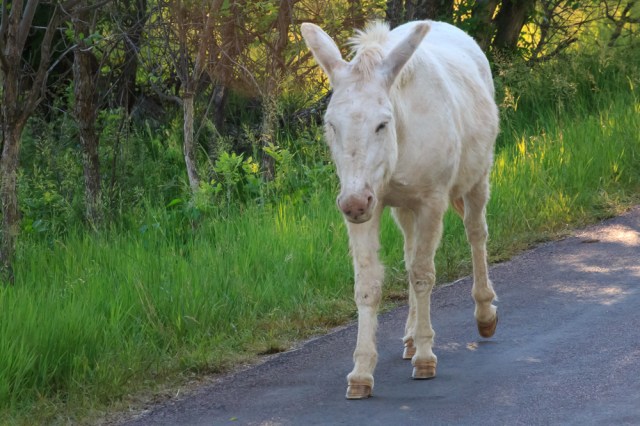
The buffalo were next. What a sight to watch them amble along a path only they knew existed, nibbling on grass as they traveled.
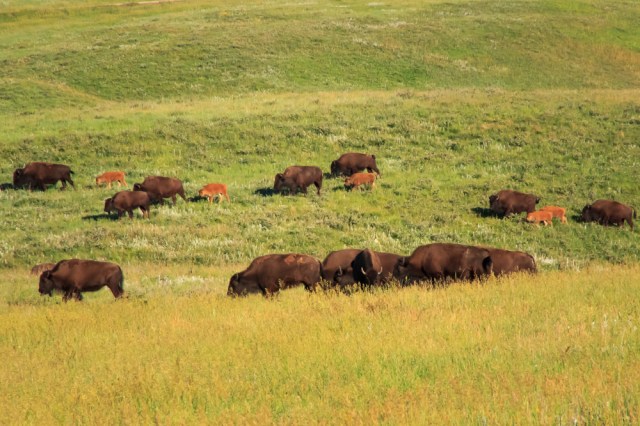
The young calves would run up toward the road and stop, look back, and scamper back to the adults. Then they’d repeat their antics, back and forth. They reminded me of our son when he was young. On our hikes, he would run ahead, run back to us, then run ahead again. He must have hiked twice as far as we did.

We watched the buffalo make their way across the road for about a half hour until a certain cow and bull finally made it to the other side. Then the young ones ran ahead. What a sight to watch these powerful beasts. They seemed so docile as they slowly moved forward to their destination until a couple males exerted their dominance and charged at each other. I was sure glad I was safely inside our truck.

Not too far from the buffalo, we spotted a coyote up on a hill.
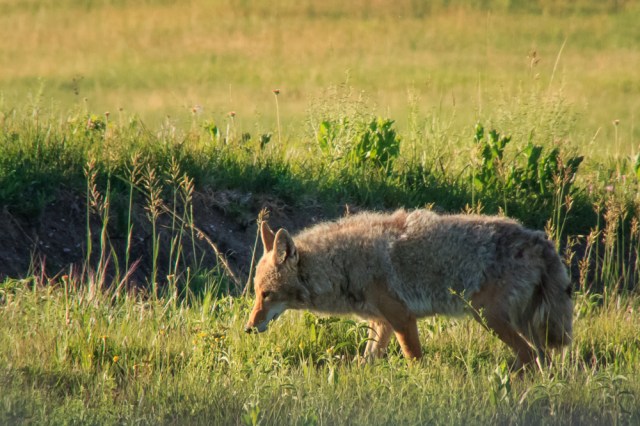
I fell in love with the Black Hills on this trip. However, there was one thing I did not care for. The helicopters.
 The whop, whop, whop of the blades seemed to follow us everywhere and ruined the ambiance of the Black Hills experience. The aircraft flew overhead at Mount Rushmore and Crazy Horse, while we rode the 1880 Train, as we traveled Iron Mountain and Needles Highway, and at Sylvan Lake.
The whop, whop, whop of the blades seemed to follow us everywhere and ruined the ambiance of the Black Hills experience. The aircraft flew overhead at Mount Rushmore and Crazy Horse, while we rode the 1880 Train, as we traveled Iron Mountain and Needles Highway, and at Sylvan Lake.
I don’t begrudge people who want to see the scenery from the air. I’m sure they gain a different perspective of the place. I only wish the helicopters could fly as quietly as an electric car. I prefer to experience nature without a side of whop, whop, whop in the air.
Next up is the final episode of our Black Hills adventure.
Safe Travels
